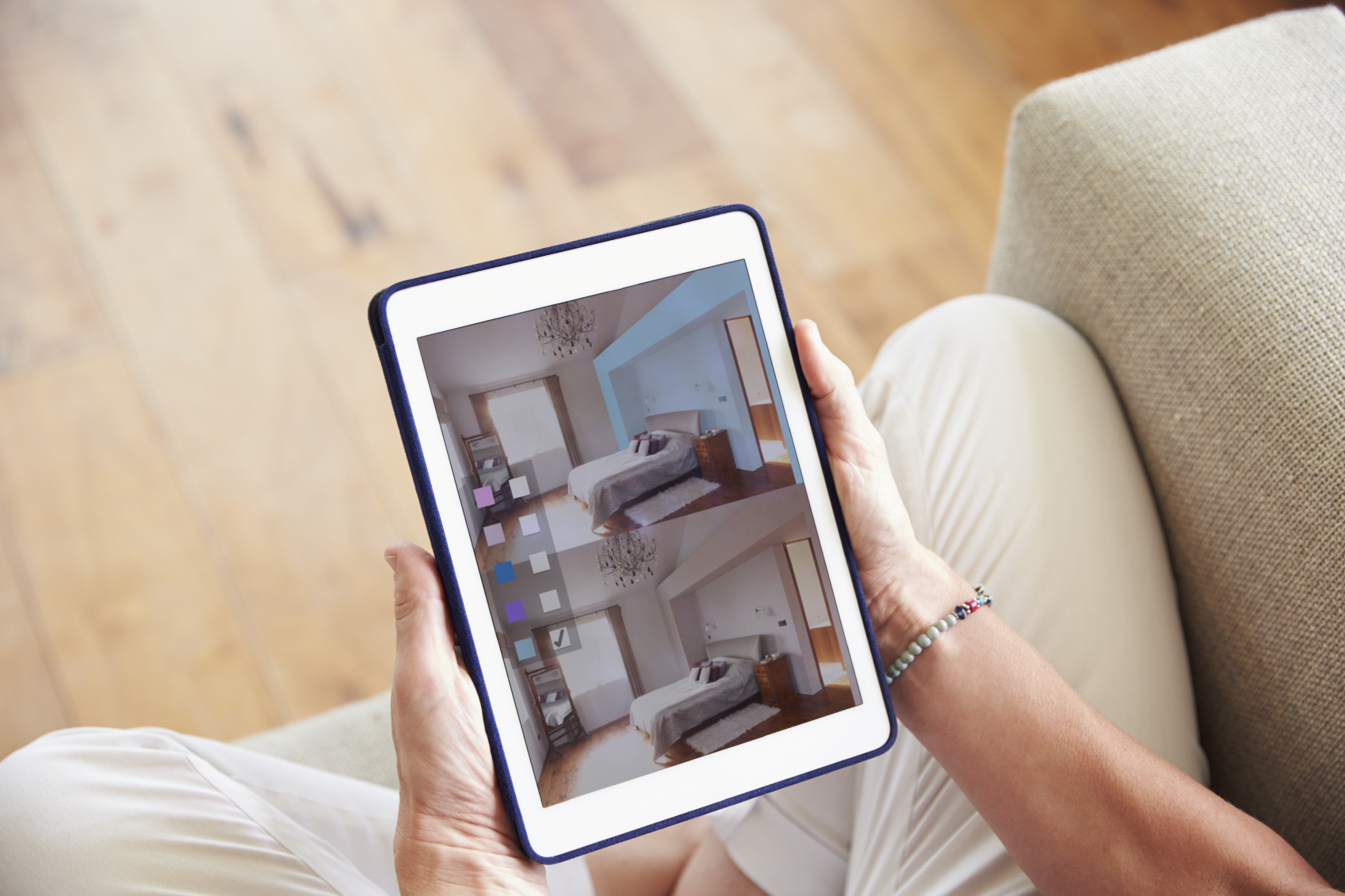How you can use the internet to make your apartment look awesome
From The Idea Factory, our special report on innovation


Designing your dream home is a luxury traditionally reserved for those with a sizeable chunk of change to spend on pricey interior decorators and expensive furniture. The rest of us are left to make due with hand-me-down couches and our own mediocre design tastes.
Thanks to the internet, that's changing, with several online tools and innovative apps making it easier for those of us on a budget to access affordable designers and decorative inspiration.
"Five years ago, people had little access to see what great design looked like and zero access to buying great home decor products virtually," says Leura Fine, CEO and founder of Laurel & Wolf, a website that connects users with personal designers who help decorate a space without ever leaving the confines of the internet. The site launched in 2014 after Fine, herself a designer, noticed a gaping hole in the marketplace.
The Week
Escape your echo chamber. Get the facts behind the news, plus analysis from multiple perspectives.

Sign up for The Week's Free Newsletters
From our morning news briefing to a weekly Good News Newsletter, get the best of The Week delivered directly to your inbox.
From our morning news briefing to a weekly Good News Newsletter, get the best of The Week delivered directly to your inbox.
Sites like Pinterest give people free and easy access to the inspiration they need to conjure up their dream home, "but they still didn't know how to put it all together," says Fine. At the time she was working as a senior designer at a firm and she knew there was an existing community of designers seeking more work who were tired of doing the boring parts of the job: billing, paperwork, and self-promotion.
"To me it seemed like a classic marketplace problem," Fine says. "I would meet people every day desperate for professional interior design services but who couldn't afford it or they didn't really know who to hire or how much they charge. And on the other side you had designers who were desperate to design and do what they love but had no access to the right kind of client." Laurel & Wolf serves as a sort of bridge between the two. The site has about 500 active designers and "thousands" of users (Fine wouldn't give me an official number).
From a user perspective, it's pretty simple: You plug in some specifics about your space and your taste, and designers actually compete for your business. Once you've picked one that matches your style, a back-and-forth process ensues. After a few weeks you come out on the other side with a customized design template and an itemized shopping list. Prices start at $299 a room, which is a steal considering the hourly cost of an interior designer. Fine said she was usually billing at $175 an hour.
Of course, there are some bad things about a purely virtual connection, explains Arielle Pardes at Refinery29. "One big drawback of working with a digital designer was not being able to predict exactly how things were going to fit into the space," she says. Also, that $299 per room only buys you the designer's expertise. All the furniture and decorations are extra.
A free daily email with the biggest news stories of the day – and the best features from TheWeek.com
Want more online and app-based tools to help you tap into your inner decorator and refine your vision? Here's a sampling:
Roomstyler for inspiration
This tool lets you follow individual designers and their creations. See something you like? One click points you to the outlet it came from so you can buy whatever products strike your fancy. It's great for gathering inspiration, but Roomstyler's main attraction is the 3D room planner. Just try to use this tool without getting sucked in for an hour. It's like a grown-up version of the SIMs without the people. It's great for visualizing how your house would really look with navy blue walls or a corner Eames chair before taking the plunge.
Havenly for a personal shopper
Like Laurel & Wolf, Havenly connects you with decorators who will custom design your space over the internet. The difference seems to come down to price, product, and delivery. At $199 a room, Havenly is a full $100 cheaper than Laurel & Wolf. The downside is Havenly sources its products from major retailers (like West Elm and Restoration Hardware), so items may be less unique and slightly more expensive. But Havenly lets you buy all the products through its website and then delivers them for you, which saves time and energy. First-time users get $50 off the price of furniture after spending $200.
Hometalk for DIY advice
This site is great for the crafty home decorator looking for new project ideas. Whether you want to transform your messy closet into a thing of beauty or need some faux berry branches for your mantel, someone has probably tried it already and can offer up some good DIY advice. Each project comes with an estimated cost, labor time, and level of difficulty so you know what you're getting yourself into.
Colorjive for shade testing
Upload a photo of your room, choose a paint color you like from a selection of brands including Sherwin-Williams and Benjamin Moore, and Colorjive will create a rendering of what the room looks like in that shade. The site is a bit primitive so results are sometimes sloppy and usually require some quick digital retouching, but it's a simple way to test new paint and reduce the likelihood that you'll have major color regrets.
Ikea planners for, well, Ikea lovers
Chances are high you have at least one item in your home from Ikea. The Scandinavian furniture maker is a staple for city-dwellers, college students, and anyone looking for affordable trendy furnishings. But it's easy to be overwhelmed by the store's endless options and winding layout. Which size storage unit would actually fit in your bedroom? How many cabinets does your kitchen need? Ikea's online planning tools make it fairly easy to create a floor plan and fill it with virtual furniture so you know exactly what you're looking for and can get in and out of the store as quickly and efficiently as possible. Pottery Barn, Lowes, Benjamin Moore, and other brands have similar handy tools.
Jessica Hullinger is a writer and former deputy editor of The Week Digital. Originally from the American Midwest, she completed a degree in journalism at Indiana University Bloomington before relocating to New York City, where she pursued a career in media. After joining The Week as an intern in 2010, she served as the title’s audience development manager, senior editor and deputy editor, as well as a regular guest on “The Week Unwrapped” podcast. Her writing has featured in other publications including Popular Science, Fast Company, Fortune, and Self magazine, and she loves covering science and climate-related issues.
-
 Pakistan: Trump’s ‘favourite field marshal’ takes charge
Pakistan: Trump’s ‘favourite field marshal’ takes chargeIn the Spotlight Asim Munir’s control over all three branches of Pakistan’s military gives him ‘sweeping powers’ – and almost unlimited freedom to use them
-
 Codeword: December 6, 2025
Codeword: December 6, 2025The daily codeword puzzle from The Week
-
 Sudoku hard: December 6, 2025
Sudoku hard: December 6, 2025The daily hard sudoku puzzle from The Week
